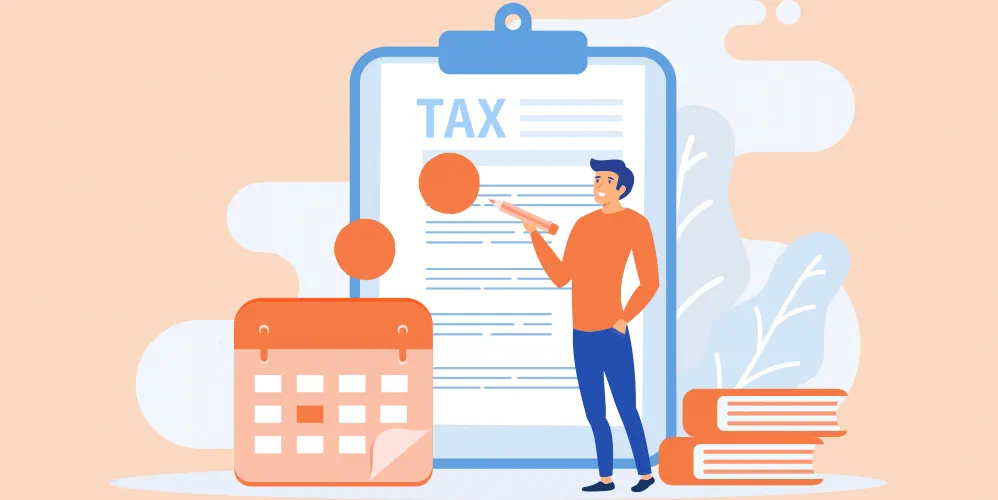
Top Indian Government Schemes to Invest in 2023
15 May 2023

Table of Content
The government introduces new investment plans to increase its residents’ income and financial status. These new government schemes are available to everyone who wants to participate, regardless of gender, marital status, socioeconomic status, location, etc. However, it is up to the residents to analyze several plans and select the one that best meets their requirements to maximize their income flow.
Investing in new government schemes provides the most significant benefit of being free of risk and easy. Post offices and banks all around India make it possible for anyone interested in signing up for any government program they want. Government investment schemes typically result in tax breaks for the government and the investor. Investors would be well to compare the various strategies before deciding on the one that promises the highest return.
What are Government Investment Schemes?
India's government and various public sector financial organizations have introduced Schemes as investment opportunities for Indian citizens. These plans were implemented to encourage responsible economic behavior among Indian citizens. Historically, Indians had a habit of hoarding their wealth, which led to low economic growth and stagnation. Indian people can profit from the development of their wealth through government investment schemes with high returns and other perks, such as tax exemptions.
List of Best Government Schemes to Invest in India
• Atal Pension Yojana (APY)
The Government provides employees in the unorganized sectors with the Atal Pension Yojana (APY), a social security plan. When it comes to helping the economically disadvantaged save aside money for their retirement, it is counted among the most significant investment schemes in the country. A monthly pension of Rs 1,000, Rs 2,000, Rs 3,000, Rs 4,000, or Rs 5,000 is paid out to subscribers of APY, depending on their age and participation. To enroll, you must be non-income tax paying and at least 18 years old, but not older than 40 years. The minimum contribution term is 20 years since it provides a pension beginning at age 60 years.
• Public Provident Fund (PPF)
Public Provident Fund (PPF) has developed into a significant vehicle for extended wealth creation for investors since its inception. Investors amass a nest egg by consistently putting money into their PPF accounts over many years. Due to its advantageous interest rate and tax advantages, the PPF has attracted a large customer base, particularly among younger depositors. At any time after the expiry of 1 year from the end of the year in which the initial subscription was made but before expiry of 5 years from the end of the year in which the initial subscription was made, the account holder may apply for obtaining a loan consisting of a sum not exceeding 25% of the amount that stood to credit at the end of the second year immediately preceding the year in which the loan is applied for.
• Sukanya Samriddhi Yojana (SSY)
Sukanya Samriddhi Yojana is a welfare plan backed by the government. It was devised as part of a 'Beti Bachao, Beti Padhao' campaign. This is the government investment schemes in India particularly tailored to the financial requirements of the female child. The plan was introduced in 2015 by the Honorable Prime Minister. The program is designed to assist parents in saving up money for their daughter's higher education, marriage, and other life milestones.
Under the program, a girl under ten years can have an account opened in her name by her parents or legal guardians. The amount ranges from Rs 250 to Rs 1,50,000 per financial year for 15 years from its opening date. The program has a lock-in term of 21 years, even if the returns are better than comparable fixed-income schemes. However, when a girl reach at the age of 18 years, she can make a partial withdrawal. Any financial institution or PO will accept your application for an SSY account.
• National Pension Scheme (NPS)
The National Pension Scheme (NPS) is a retirement benefits program to ensure its members have a steady income once they retire. Each subscriber to the NPS is given a permanent retirement account number. An investor can divide their capital between stocks and bonds or other safe investments. In simple words, there is no upper limit for NPS contributions. Investments up to Rs 50,000 can avail of a tax relief or deduction under Section 80CCD (1B) of the Income Tax Act. Section 80C of the Income Tax Act allows for a tax deduction on investments of up to Rs 1,50,000.
• Sovereign Gold Bonds (SGBs)
On behalf of the Indian Government, the Reserve Bank of India (RBI) issues Sovereign Gold Bonds . Gold-backed government bonds are known as SGBs. The government created the SGB Scheme in November 2015 as an alternative to physical gold ownership.
The Gold Bond also provides a set interest of 2.5% yearly on the issue price, in addition to the price fluctuation gain. Half-yearly, the accumulated interest gets deposited into the investor's designated savings account. The SGB avoids the danger and expense of long-term storage because it is a paper-based instrument. Since early redemption is permitted after the fifth year, this investment choice is deemed liquid. Additionally, SGBs may be sold in a pinch or used for secured loans with them as collateral. They deliver a similar Loan to Value ratio as a loan secured by actual gold.
• Senior Citizens Savings Scheme (SCSS)
The Senior Citizen Savings Scheme (SCSS) is a well-known option and among the best government investment schemes. The program was established to secure the future of those aged 60 years and up. It has a 5-year term that may be extended by another three years, and its interest rate is more significant than other low-risk investing alternatives.
Top Government Investment Plans and Who is it for
Here is a comprehensive government schemes list:
| Plan | Who is it For |
|---|---|
| Public Provident Fund | Interested in earning great returns on investment |
| Sovereign Gold Bonds | Anyone interested in locating other ways of holding actual gold for financial purposes may consider |
| Sukanya Samriddhi Yojana | Parent of a girl child on behalf of the beneficiary can open the account any time after the birth of the girl child until she turns ten years old. |
| Atal Pension Yojana | particularly for the financially weaker sections of society between the ages 18-40year (non-tax payee) |
| National Pension Scheme | Between 18 -70years |
| Senior Citizens Savings Scheme | Senior citizens aged 60 years and above |
Conclusion
The Government of India provides various additional initiatives to safeguard its citizens' future financial stability. If you want to protect your family's financial future, consider any new government schemes or investments you could make.
Government Investment Schemes - FAQs
1. Which government scheme gives the highest rate of interest?
In India, there are various incentive programs for business owners from the government. Here are a few of the top government investment schemes with high returns options:
- National Pension Scheme (NPS)
- Senior Citizen Saving Scheme (SCSS)
- Public Provident Funds (PPFs)
- Sukanya Samriddhi Yojana (SSY)
- Kisan Vikas Patra (KVP)
2. What is the benefit of investing in government schemes?
Investing in a government savings program offers tax benefits under Section 80C of the Income Tax Act of 1961 and high profits. Government savings programs often provide better returns than traditional term deposits.
Popular Articles
Related Articles










-
Disclaimer
The contents of this article/infographic/picture/video are meant solely for information purposes and do not necessarily reflect the views of Bank of Baroda. The contents are generic in nature and for informational purposes only. It is not a substitute for specific advice in your own circumstances. Bank of Baroda and/ or its Affiliates and its subsidiaries make no representation as to the accuracy; completeness or reliability of any information contained herein or otherwise provided and hereby disclaim any liability with regard to the same. The information is subject to updation, completion, revision, verification and amendment and the same may change materially. The information is not intended for distribution or use by any person in any jurisdiction where such distribution or use would be contrary to law or regulation or would subject Bank of Baroda or its affiliates to any licensing or registration requirements. Bank of Baroda shall not be responsible for any direct/indirect loss or liability incurred by the reader for taking any financial decisions based on the contents and information mentioned. Please consult your financial advisor before making any financial decision.
Government Schemes for Women Entrepreneurs in India
In India, where there are over 15.7 million women-owned enterprises and women are driving the start-up ecosystem, female entrepreneurship is gaining ground. It is anticipated that during the next five years, this number will rise by 90%. Despite their growing zeal, women entrepreneurs still face a variety of challenges, such as bias against them because of their gender, a lack of funding, and inadequate support. The Indian government has introduced a number of programmes to assist female entrepreneurs in response to these difficulties.
Complete Guide on Fixed Deposit (FD)
In India, fixed deposits (FDs) are considered one of the safest ways to invest one's hard-earned money. FDs are not only easy to begin, but they also offer good returns too. If one's priority is to save money to meet their financial goals without taking risks while receiving guaranteed returns, then investing in an FD is one of the best options.

